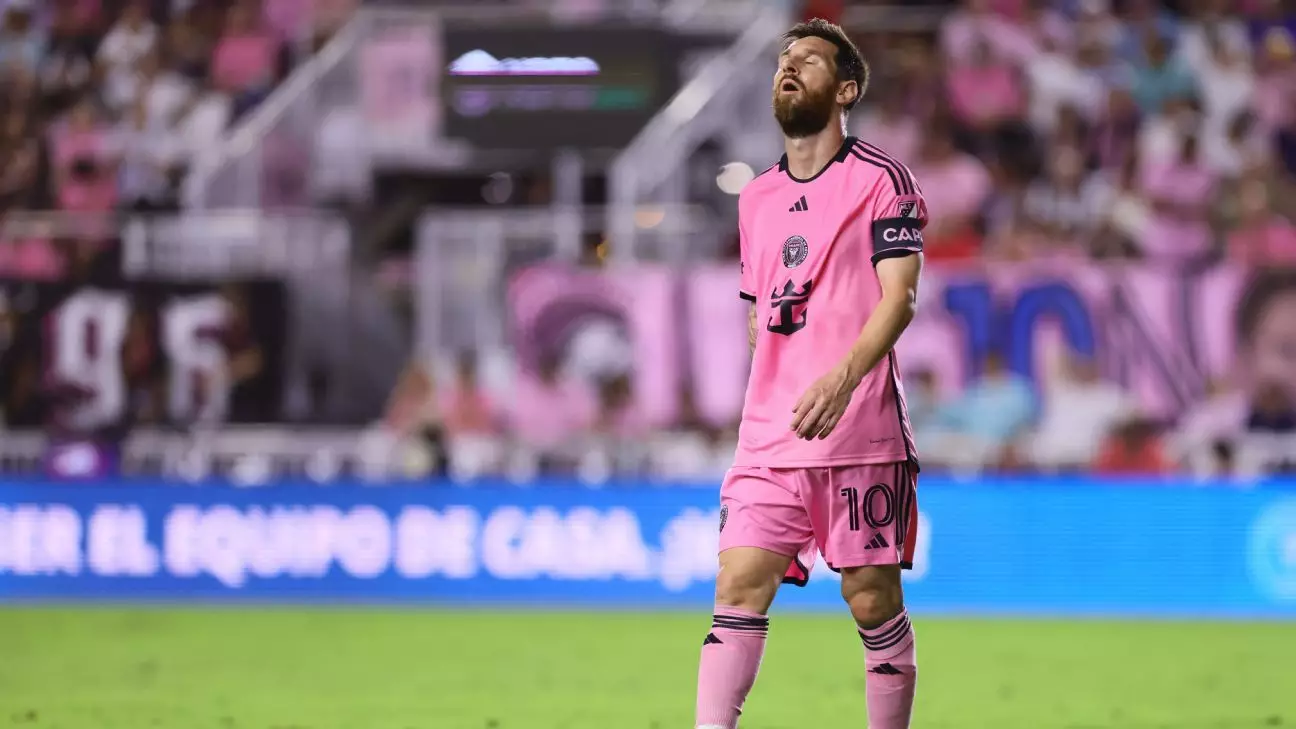Inter Miami’s 2024 MLS journey came to a shocking halt as more than 20,000 fans witnessed the team’s exit in the first round of the playoffs against Atlanta United. Despite being pre-season favorites, this gut-wrenching defeat painted a sobering picture for a team anchored by international superstars like Lionel Messi and Luis Suárez. How, one might wonder, could a club that finished the regular season in ninth place in the Eastern Conference, with a staggering 34 points difference, manage to turn the tables on a likely contender?
The foundations of Inter Miami’s downfall were laid much before the playoff whistle blew. The season kicked off with glaring deficiencies during an arduous preseason. Players clocked over 28,000 air miles, traversing three continents, engaging in demanding training sessions on less-than-ideal pitches. Messi’s own reflections on the grueling schedule mirrored a sense of dissatisfaction: “This year I didn’t have [a good preseason] because we had a lot of traveling from one place to another.” This extensive touring, intended for global visibility and fan engagement, proved detrimental to player fitness.
The catastrophic ACL tear to midfielder Facundo Farías during the initial friendly exemplified the season’s bleak forecast. Farías, a promising winter signing who had quickly begun to find his rhythm, found himself sidelined before the real trials even commenced. By the end of March, injuries became a systemic issue, with Miami listing a remarkable seven incapacitated players in the league report – the highest figure across MLS teams at that juncture. This pattern was symptomatic of a broader issue, indicating a fragile roster that couldn’t withstand the strains of both domestic and international competition.
As the season progressed, injuries piled up, transforming Miami’s roster into a revolving door of absences. The sheer volume of injuries was staggering, with 184 absences attributed to player injuries and fatigue issues. Coach Gerardo Martino and sporting director Chris Henderson were compelled to engage in emergency buys, struggling to fill the gaps left by foundational figures like Farías and defensive stalwart Kryvtsov. The reliance on hastily-acquired talents became evident, with the abrupt introduction of players from the SuperDraft adding to the chaos instead of providing the expected cohesion.
Martino’s strategies to patch up the squad often resembled an ill-fitted quilt, as he attempted to juggle makeshift lineups throughout the season. His frustrations became palpable as he lamented chasing after a complete squad, only to be thwarted week after week by yet another injury setback. Just as he began to breathe easy, the specter of injury would strike again—rendering Miami’s dreams of silverware ever more elusive.
The implications of Miami’s unbalanced roster management were further highlighted by an overreliance on high-profile players like Messi and Suárez. Although these household names dazzled on numerous occasions, coping with a congested schedule required more than just brilliance from the superstars. The absence of consistency and a robust supporting cast made it painfully clear—what once seemed an advantage turned into a heavy burden.
Throughout the season, Messi’s scoring heroics were crucial; however, this reliance became painfully evident in critical moments where their absence was felt the hardest—leading to humiliating defeats against other MLS opponents. Despite their potential to change the game’s course, Miami’s lack of depth exposed the significant cracks in their strategy. The pattern of inconsistent performances became the hallmark of their campaign, leading to a heart-wrenching playoff exit that showcased the cumulative toll of a flawed season.
Looking ahead, Inter Miami must glean insights from a tumultuous 2024 if they hope to rebound in 2025. The vital lesson is clear: stability requires shrewd planning and foresight. With an upcoming crowded fixture list, including commitments in various tournaments such as the MLS, Leagues Cup, and even the Club World Cup, the need to cultivate depth and resilience within the squad cannot be overstated.
The current roster, fraught with impending contract expirations, presents both a challenge and an opportunity. The departures of essential players could create vacancies ripe for well-considered signings. Martino and Henderson must prioritize experienced reinforcements capable of providing defensive solidity—particularly for a backline seemingly perpetually on the brink of collapse. Miami cannot afford to repeat the mistakes of the past; the right acquisitions can pave the way for a revitalized campaign and potentially restored glory.
The specter of a strengthened Inter Miami reflects both hope and possibility. With thoughtful roster adjustments, Miami has the opportunity to not only aim for domestic triumphs but to emerge as a serious contender on the international stage. As they prepare for a grueling year ahead, reinforced with the lessons learned from 2024, new beginnings could lead to future successes, and perhaps another trophy lift for the illustrious Messi could soon become a reality.

